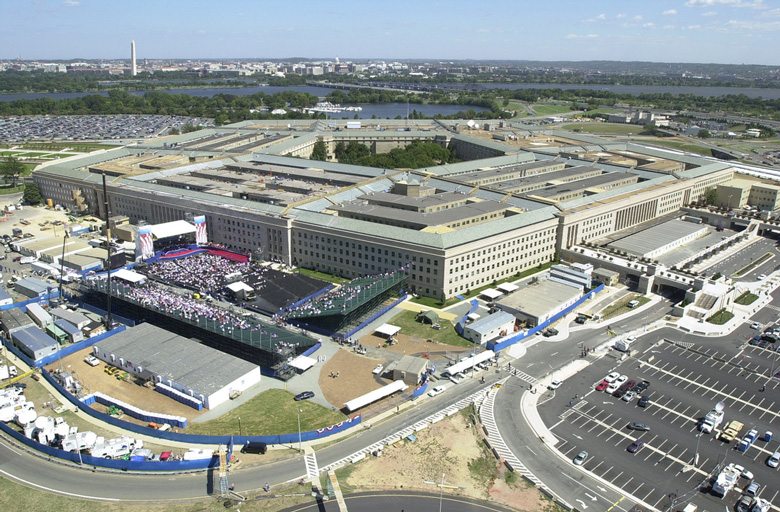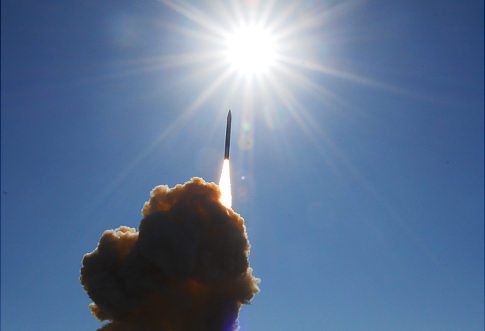Nothing changes on New Year’s Day, including the Pentagon’s budget strategy.
Last Thursday, President Barack Obama and Department of Defense (DoD) officials held a press conference to release the “Defense Strategic Review,” which will serve as a blueprint for reducing Pentagon spending in coming years.
This public relations show repeatedly stressed the “unprecedented” and “exceptional” level of collaboration and care that went into planning the new strategy. Those looking for specific details about what is going to be cut, and by how much, will have to wait until the budget “drop” at the end of the month, according to General Martin Dempsey, chairman of the Joint Chiefs of Staff, who spoke at the event.
But, reading between the lines, we at POGO had several takeaways, which indicate the President and the Pentagon aren’t committed to reducing wasteful DoD spending.
Defense Spending Will NOT Be Reduced
The “savings” from this plan aren’t savings in the sense that most Americans consider saving money by… well…spending less money. These “savings” are simply reductions in what the Pentagon’s base budget was expected to be. The actual number of dollars given to the Pentagon will continue to increase, though if inflation is accounted for there will be a slight reduction in spending. According to President Obama:
“Over the past ten years, since 9/11, our defense budget grew at an extraordinary pace. Over the next ten years the growth in the defense budget will slow, but the fact of the matter is this—it will still grow… In fact, the defense budget will still be larger than it was toward the end of the Bush Administration.”
Soldiers Cut, Top Brass and Contractors “Preserved”
President Obama, who led off the press conference, declared that the size of the military will shrink. Secretary of Defense Leon Panetta echoed Obama stating, “We will have a smaller and leaner force.”
But, there was absolutely no mention of reducing the bloated General and Admiral ranks that [we] have repeatedly bemoaned. The simple fact of the matter is that the DoD’s top ranks have grown faster than all other personnel groups since 9/11, yet it appears that enlisted soldiers and lower ranking officers, many of whom command troops in battle, will be cut instead of the top brass.
Additionally, not much is being said about cutting back on DoD service contractors, who are paid more than all DoD uniformed and civilian personnel combined, as POGO’s Nick Schwellenbach wrote in TIME. Meanwhile, it is clear that the number of both uniformed and DoD civilian personnel will shrink. Panetta made it clear that the CEO’s of defense contractors don’t have too much to worry about because the Pentagon will be, “preserving the health and viability of the nation’s defense industrial base.”
Plans to Cut the Nuclear Weapons Arsenal
One of the few glimmers of hope in this announcement was the promise to reduce the U.S. nuclear arsenal. According to Obama, “We’ll continue to get rid of outdated Cold War-era systems.” What this means, according to the “U.S. Global Leadership: Priorities for 21st Century Defense” is that, “It is possible that our deterrence goals can be achieved with a smaller nuclear force, which would reduce the number of nuclear weapons in our inventory as well as their role in U.S. national security strategy.”
While reducing wasteful spending on maintaining a nuclear arsenal larger than the rest of the world’s combined—something POGO has advocated for— is certainly welcome news, the fact is that once the rhetoric is stripped away, it’s not clear that the new strategy will drastically shift actual budget priorities. Until we are actually shown how a shift in focus towards the Asia-Pacific region translates into actual spending, we are left believing that little has changed other than our perceived adversaries. At home, it’s still “meet the new boss, same as the old boss.”










